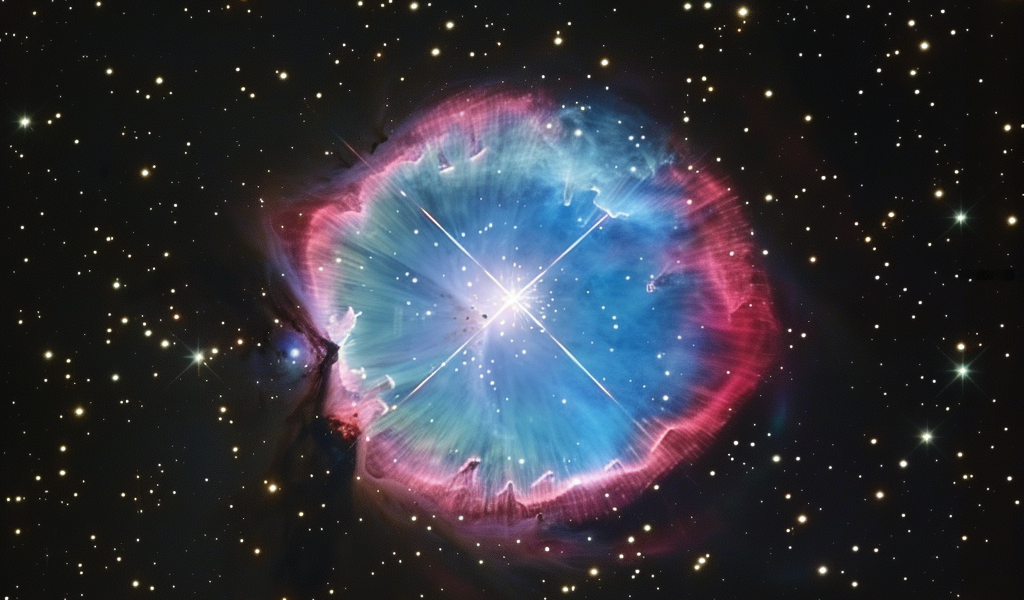Hubble Telescope Celebrates 34th Anniversary with Stunning Image of Little Dumbbell Nebula
On April 24th, the NASA/ESA Hubble Space Telescope marked its 34th anniversary since its launch with a stunning snapshot of the Little Dumbbell Nebula, also known as Messier 76, M76, or NGC 650/651, situated 3400 light-years away in the northern circumpolar constellation Perseus. This planetary nebula is a captivating sight for both amateur and professional astronomers alike.
M76, a planetary nebula, showcases an expanding shell of glowing gases that originated from a dying red giant star. As the star collapses into a white dwarf, the nebula takes on a unique structure comprising a central bar ring and two lobes. The ring, formed from gas and dust ejected by the dying star, may have been influenced by a binary companion star that is no longer visible in the Hubble image.
The central white dwarf star within M76 is incredibly hot, reaching temperatures of 120,000 degrees Celsius, which is 24 times hotter than our Sun’s surface temperature. This star, along with the surrounding gases, emits a vibrant glow with red hues from nitrogen and blue hues from oxygen.
The nebula’s lobes, propelled by the star’s rotation axis, are hurtling through space at an astonishing speed of two million miles per hour. The interaction between the fast-moving gases and the slower-moving material from the star’s red giant phase creates a mesmerizing display of stellar wind.
Despite its dazzling appearance, the Little Dumbbell Nebula is a fleeting cosmic phenomenon, expected to disappear in approximately 15,000 years. This short-lived nature serves as a reminder of the vast timescales present in the universe.
Since its inception in 1990, the Hubble Space Telescope has revolutionized our understanding of the cosmos, capturing 1.6 million observations of over 53,000 celestial objects. The telescope’s contributions to space science and exploration continue to inspire awe and curiosity among scientists and stargazers worldwide.





